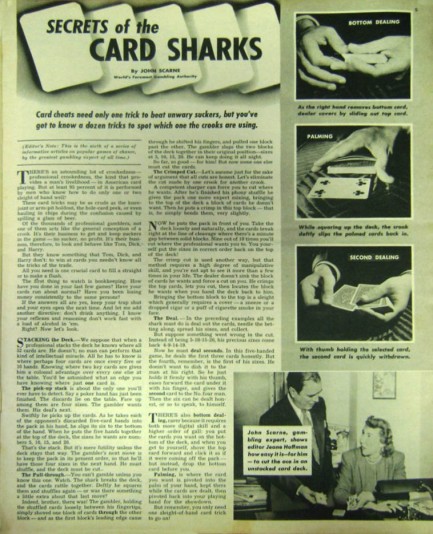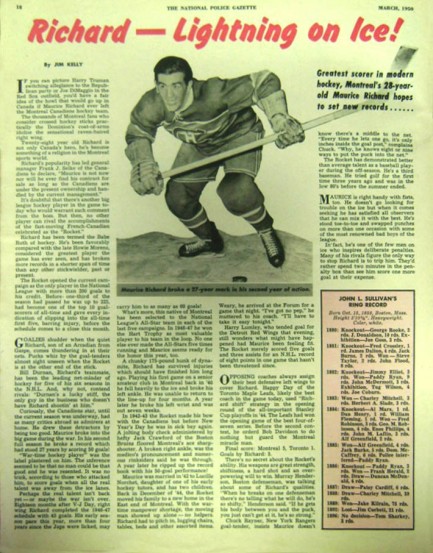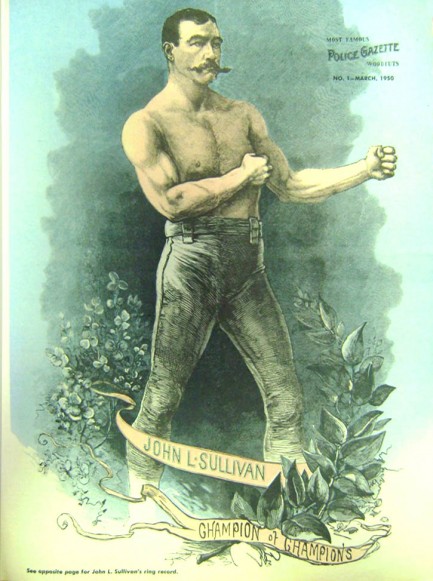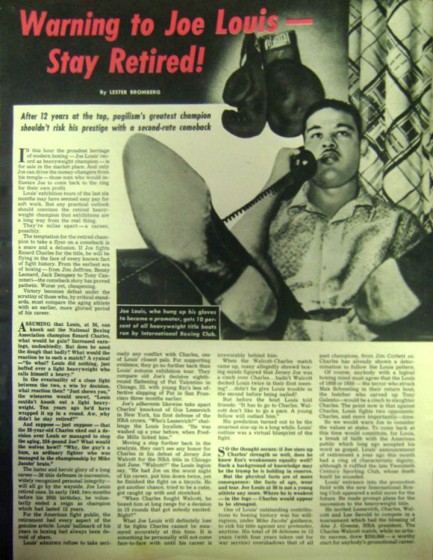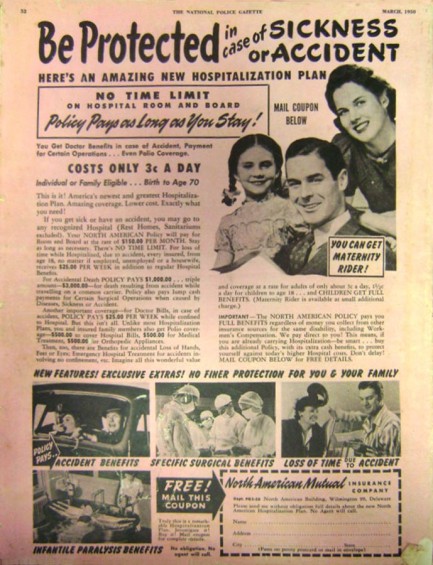| Sportswire | Dec 29 2016 |

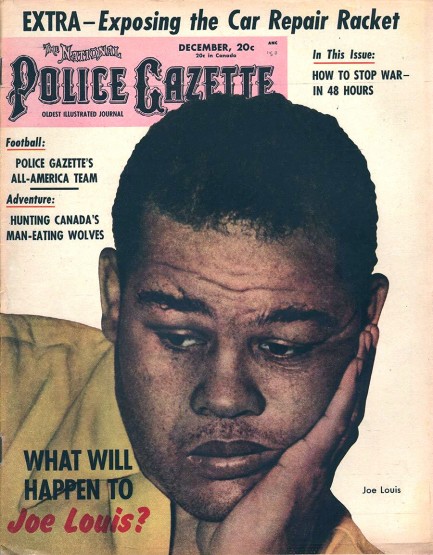
The National Police Gazette asks on a cover from this month in 1950 “What Will Happen to Joe Louis?” It's a poignant question. Louis had earned more than $4 million during his boxing career (about $40 million in 2016 money), but thanks to predatory managers and slimy handlers had received only about $800,000 of it. However, his gross earnings left him with a huge tax bill, forcing him to fight past his prime in an attempt to pay off the debt. In September 1950 he met Ezzard Charles and was thrashed. For his pain he earned just over $100,000—not nearly enough to pay off the government. Left with no choice, he decided to shoot for another big payday. First he notched several wins again club level fighters, then booked a bout against another top boxer. That boxer was twenty-seven year old Rocky Marciano, and the meeting ended with Louis being knocked clean out of the ring. So, getting back to the Gazette's question: "What will happen to Joe Louis?" What happened is he retired and became an exhibition fighter, still carrying that heavy debt, and he never paid it off.
| Sportswire | Sep 23 2015 |

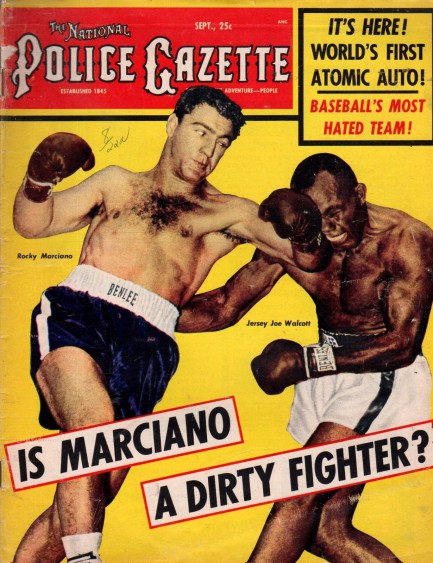
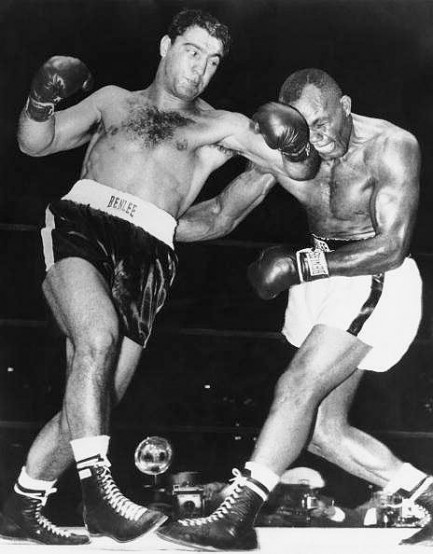
| Sportswire | Apr 21 2015 |

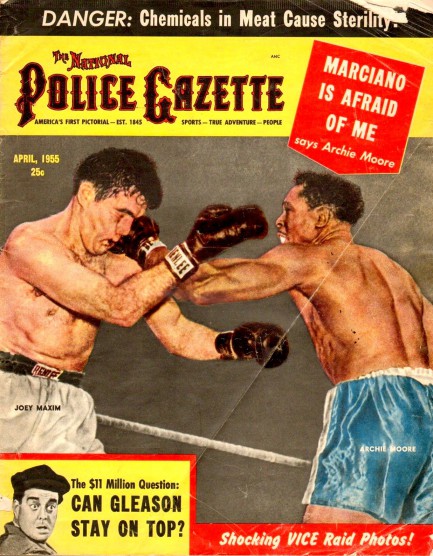
This cover of The National Police Gazette from April 1955 shows light-heavyweight champion Archie Moore putting a hurting on Joey Maxim. Gazette was hyping an upcoming title bout between Moore and Rocky Marciano, then and now considered one of the top three boxers to ever lace up a pair of gloves. We doubt that Marciano was afraid, as Moore claims on the cover, but maybe he should have been. The night of the bout Moore amazed/dismayed the crowd by landing a right counter and knocking Marciano to his knees. It was only the second time in Marciano's storied career that he had hit the canvas. He received a count from the ref. Under boxing rules the count should have stopped when Marciano rose—which he did after two seconds—and Moore should have been free to pummel his presumably dazed opponent. But referee Harry Kessler interposed himself between the two fighters.
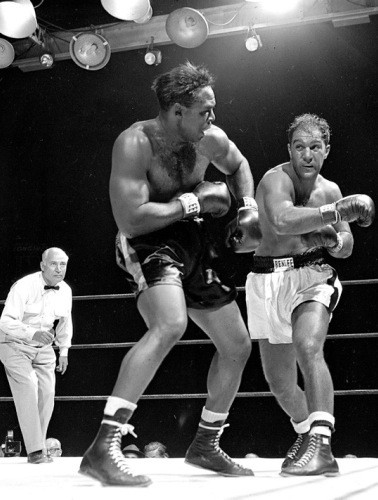 Moore tells it this way: “The referee saw me stepping toward Marciano, and [put] his butt in my stomach and kept me off Marciano. He grabbed Marciano’s hands and wiped off his gloves while my corner yelled, ‘Hit him! Hit him!’ All of a sudden, Kessler jerked [Marciano’s] hands, and Marciano’s head jerked and [that] brought him to.”
Moore tells it this way: “The referee saw me stepping toward Marciano, and [put] his butt in my stomach and kept me off Marciano. He grabbed Marciano’s hands and wiped off his gloves while my corner yelled, ‘Hit him! Hit him!’ All of a sudden, Kessler jerked [Marciano’s] hands, and Marciano’s head jerked and [that] brought him to.”
Moore eventually lost the fight. But you have to give him credit—rather than thinking Kessler acted maliciously, he believes the ref was so amazed to see the champ down that he simply forgot his duties under the rules. Still, Moore makes no bones about it—in his view, Kessler cost him the fight. In the end though, Moore had to be proud. He had jumped up a weight class for the bout, and, at forty-one, was a decade older than Marciano. For those reasons and others a Moore victory would have been the greatest upset in boxing history, but it was not to be.
| Sportswire | Oct 26 2013 |

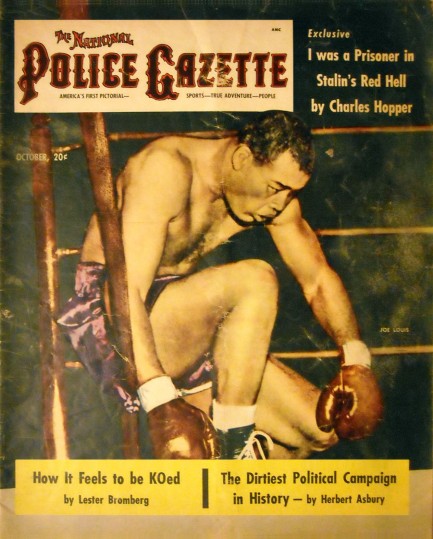
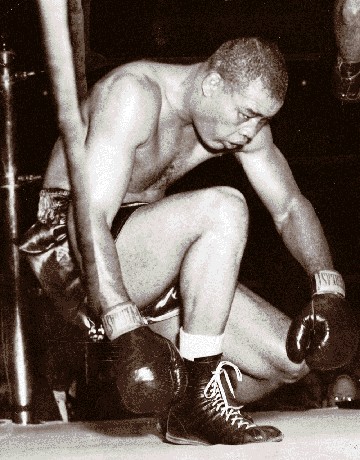 It’s been awhile since we shared one of The National Police Gazette’s famed boxing covers, so today we have a smudged and smeared but still compelling one featuring Joe Louis after being knocked down by Rocky Marciano. Louis had taken the fight strictly for the money, which he needed to deal with tax problems. Pretty much everyone (except those sneaky oddsmakers) knew Louis would lose to Marciano, who was a decade younger and the reigning heavyweight champ, and indeed Louis was knocked out in the eighth round. That was today in 1951. We also found the original photo the Gazette used for its cover, which hit newsstands in October 1952. Unfortunately we had to go to a white supremacist website to get it. We’re going to take a long shower, and we’ll continue with our regularly scheduled pulp once we feel clean again. In the meantime, to see more fascinating Gazette boxing covers start here and here, and follow the links in those posts.
It’s been awhile since we shared one of The National Police Gazette’s famed boxing covers, so today we have a smudged and smeared but still compelling one featuring Joe Louis after being knocked down by Rocky Marciano. Louis had taken the fight strictly for the money, which he needed to deal with tax problems. Pretty much everyone (except those sneaky oddsmakers) knew Louis would lose to Marciano, who was a decade younger and the reigning heavyweight champ, and indeed Louis was knocked out in the eighth round. That was today in 1951. We also found the original photo the Gazette used for its cover, which hit newsstands in October 1952. Unfortunately we had to go to a white supremacist website to get it. We’re going to take a long shower, and we’ll continue with our regularly scheduled pulp once we feel clean again. In the meantime, to see more fascinating Gazette boxing covers start here and here, and follow the links in those posts.| Vintage Pulp | Sportswire | Jan 29 2013 |

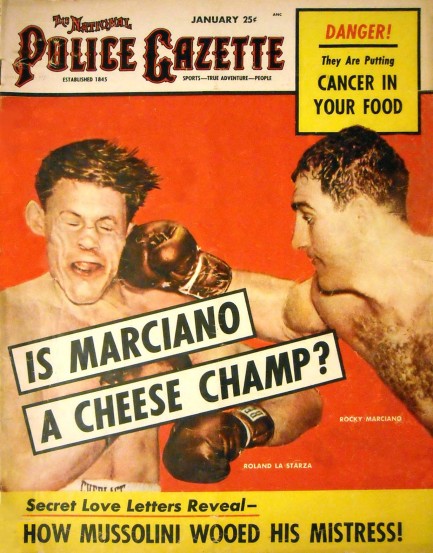
The National Police Gazette absolutely loved showing boxers getting their faces rearranged, as we’ve previously shown you here and here. On this cover from January 1954 the puncher is Rocky Marciano and the punchee is Roland La Starza, who despite appearances here was a quality fighter whose distinction is in being the man who came closest to defeating Marciano. That was back in 1950, when La Starza’s record stood at 37-0 and Marciano’s at 25-0. La Starza was the darling of boxing writers because of his scientific style, whereas Marciano was considered a brawler. The contrast could not have been more compelling, and the fight was a back and forth affair that thrilled the Madison Square Garden crowd. The two men ended the bout even on the scorecards, but La Starza lost the decision due to a controversial supplemental pointing system that tipped the tables for Marciano.
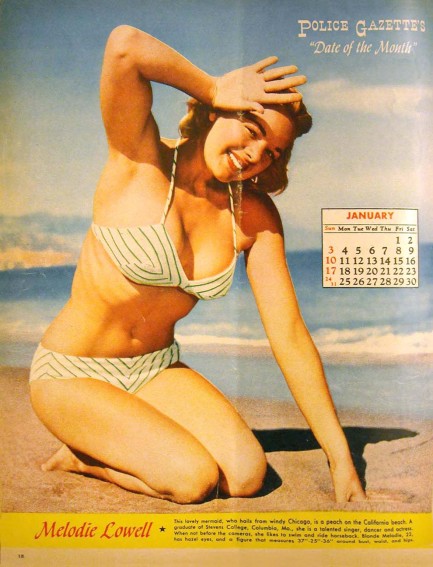
| Vintage Pulp | Aug 1 2012 |

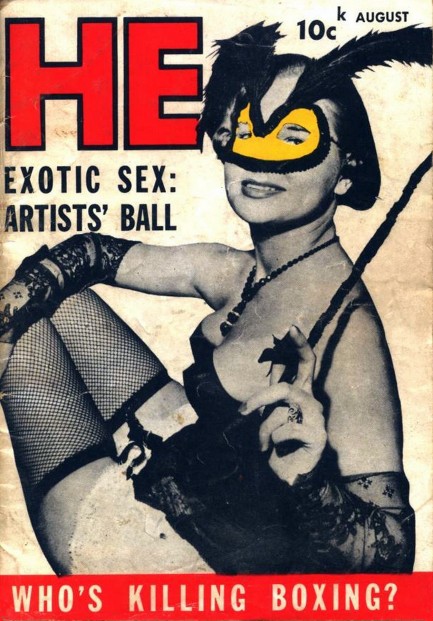
Last year we posted the front and back covers of an issue of He magazine. As usual, it’s taken us longer than we intended, but today we’re back with more. The above cover appeared this month in 1953 and features a masked model shot at New York City’s annual Artists Equity Ball, which, according to He, pretty much turned into an orgy. We don’t know about that, but the photos do reveal a rather racy scene. You also get shots of (we think) Rocky Marciano knocking out someone or other and lightweight champ Jimmy Carter mashing some hapless opponent’s face, photos of Laurie Anders, Lili St. Cyr, Lilly Christine, Daniele Lamar, and other celebs of the day, an amazing still of Julie Newmar, aka Julie Newmeyer, dancing in Slaves of Babylon, plus a back cover featuring highly touted but ultimately underachieving actress Mara Corday. We don’t have to bother too much with a description today, because these digest-sized magazines have text that scans large enough to be read even on small computers. So read and enjoy.
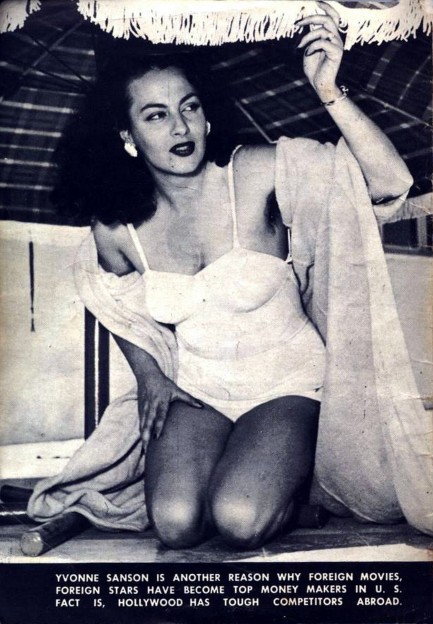
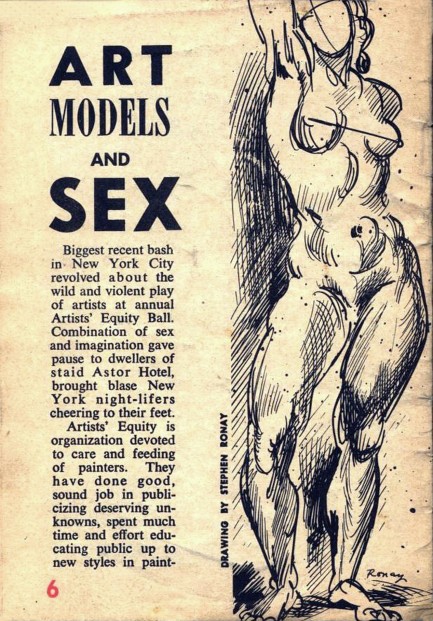
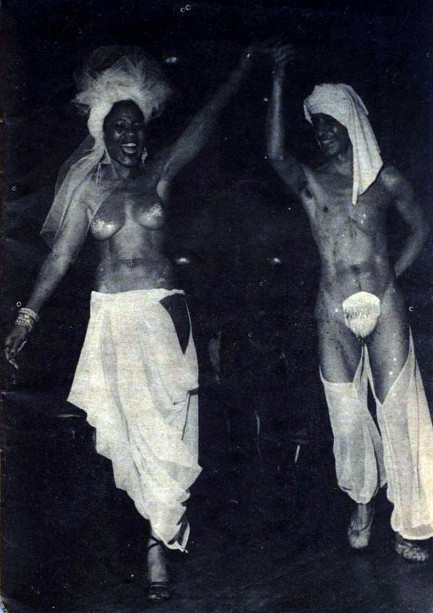
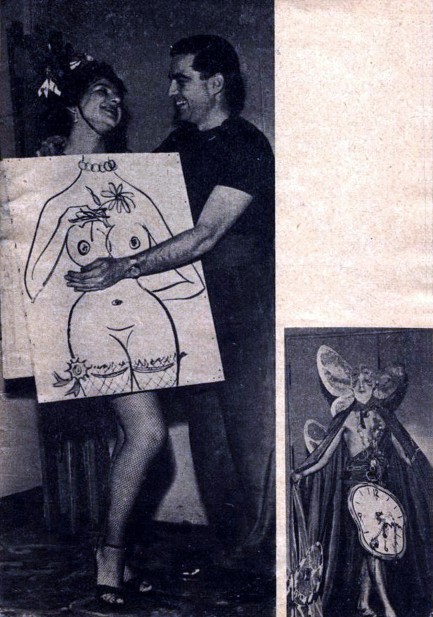
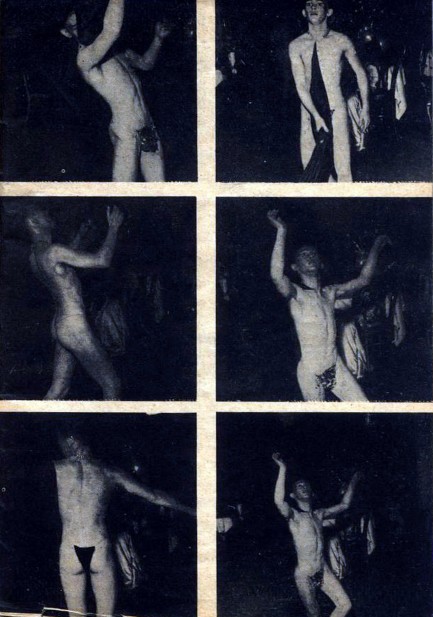
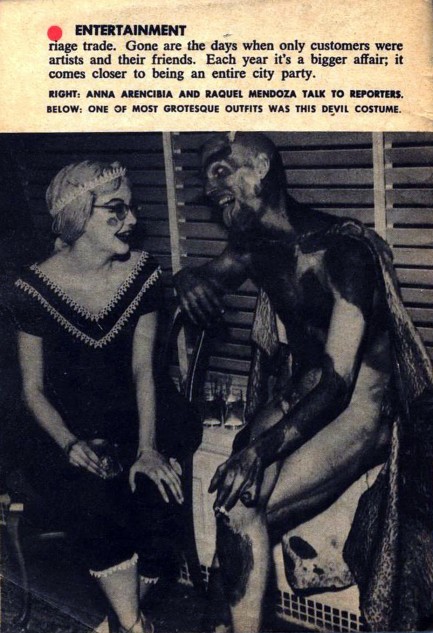
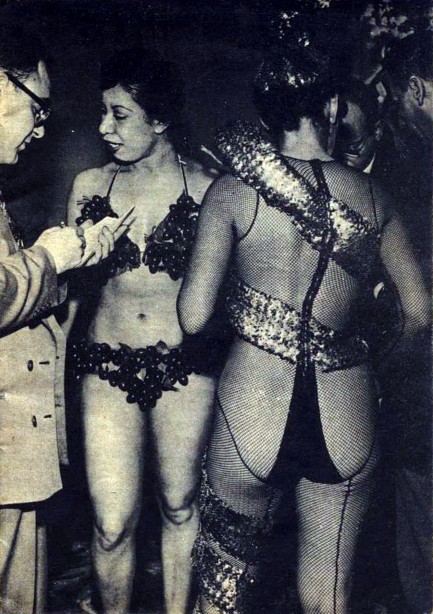
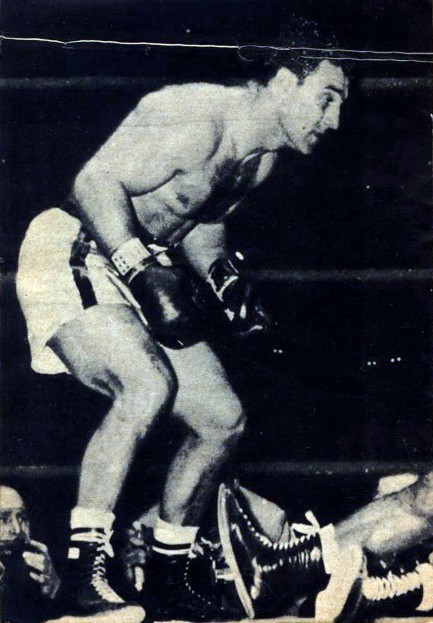
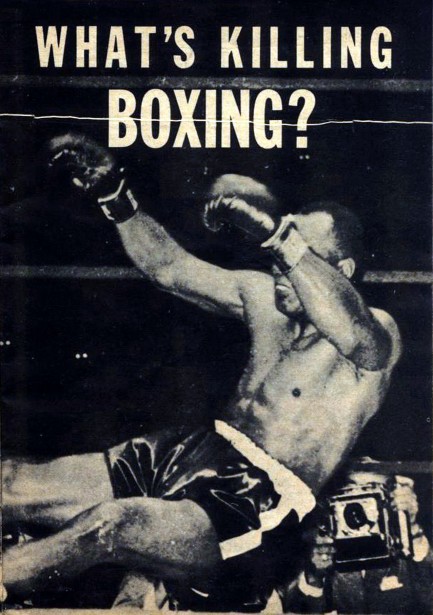
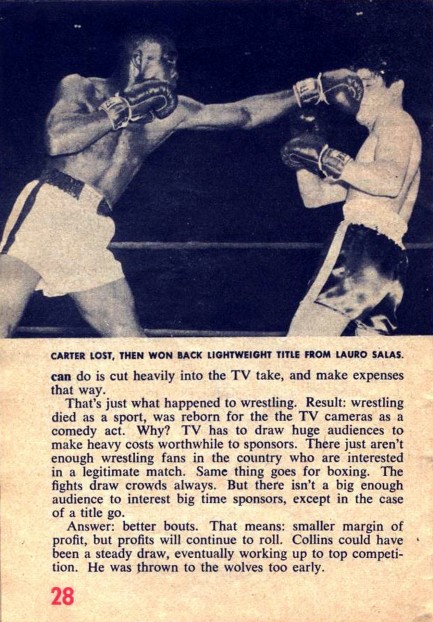
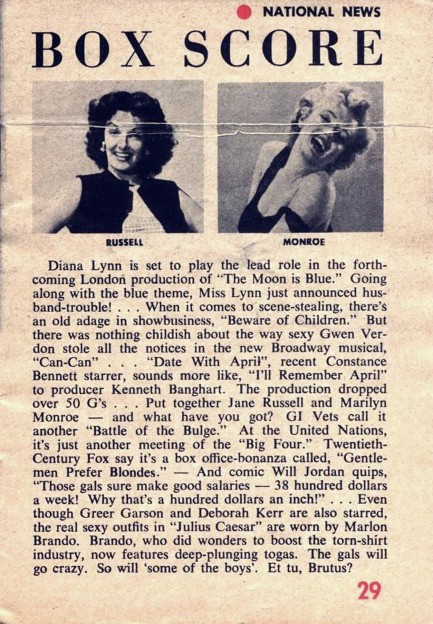
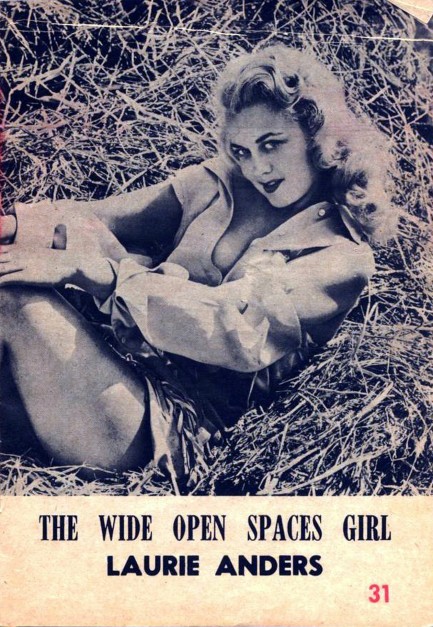
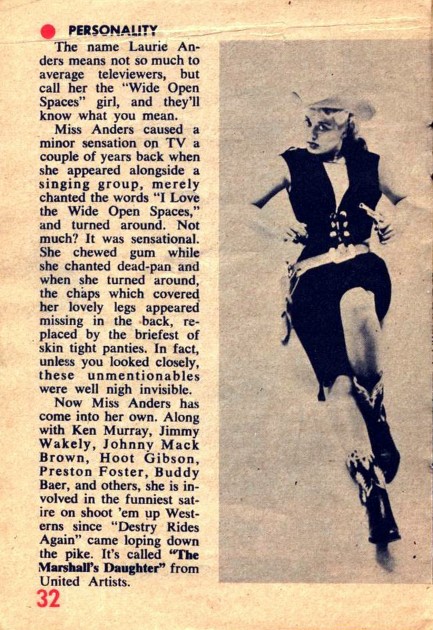
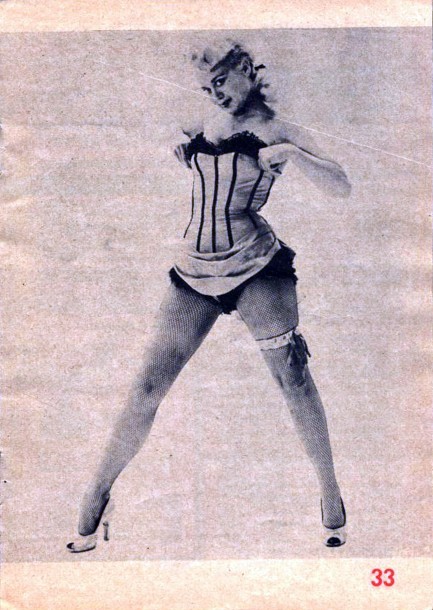
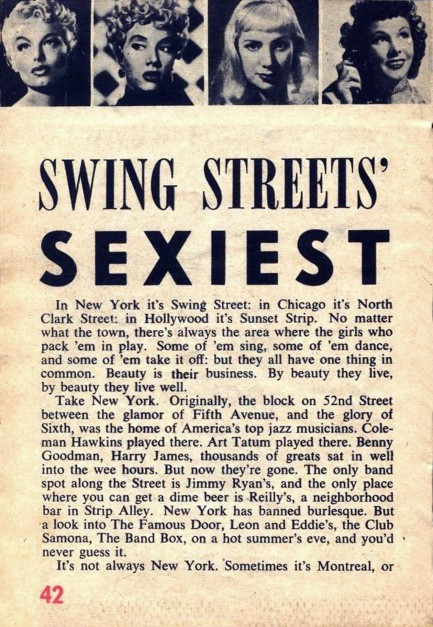
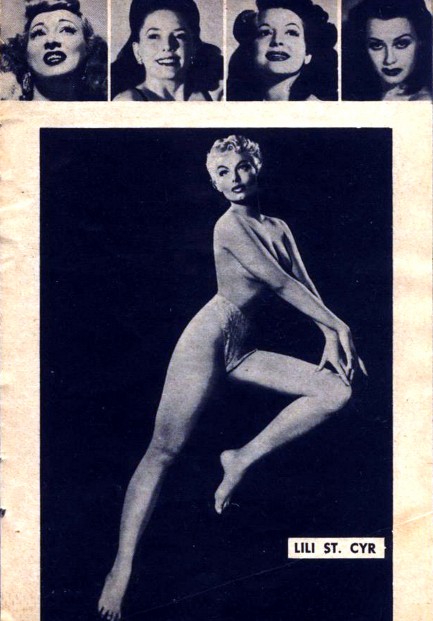
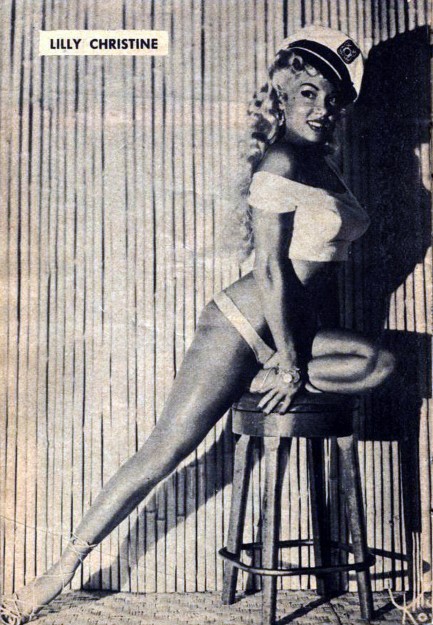
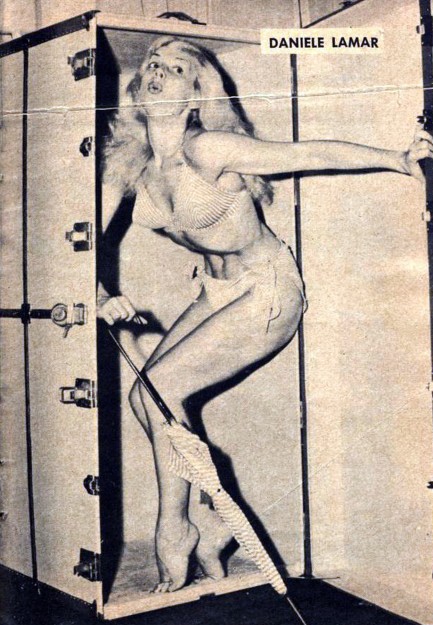
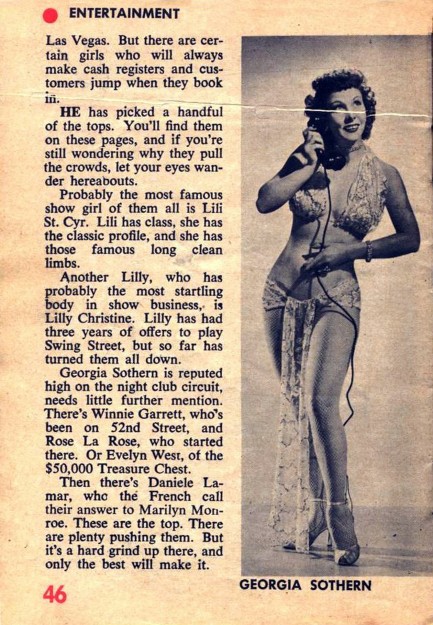
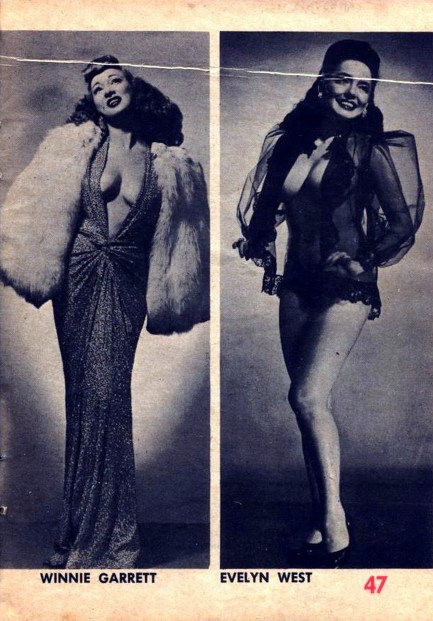
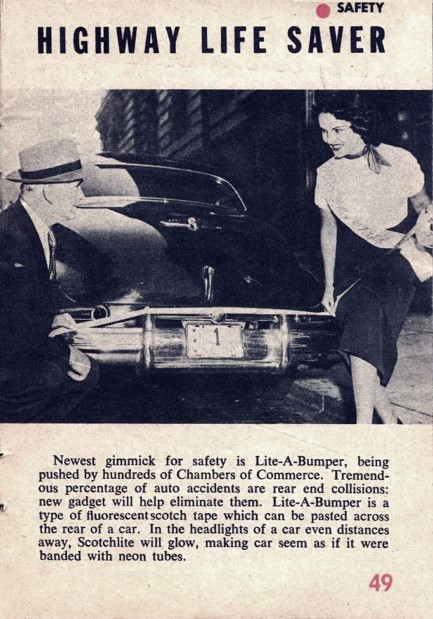
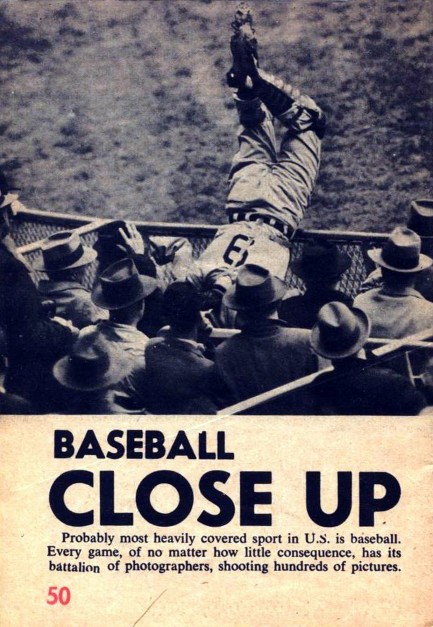
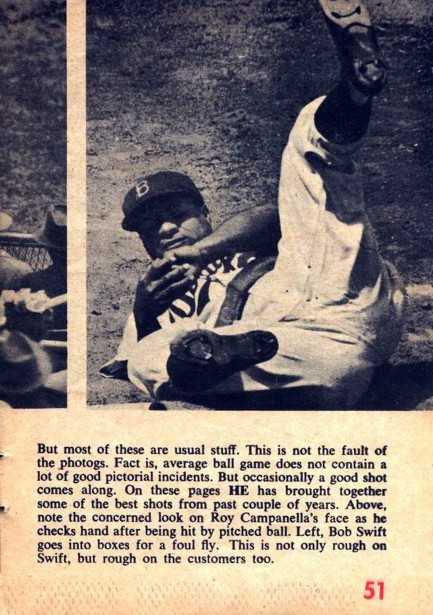
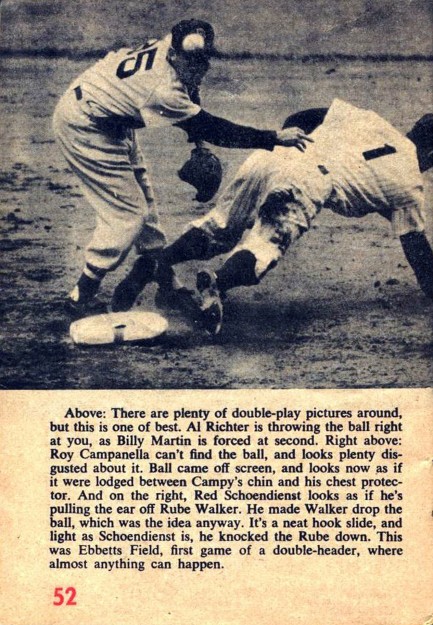
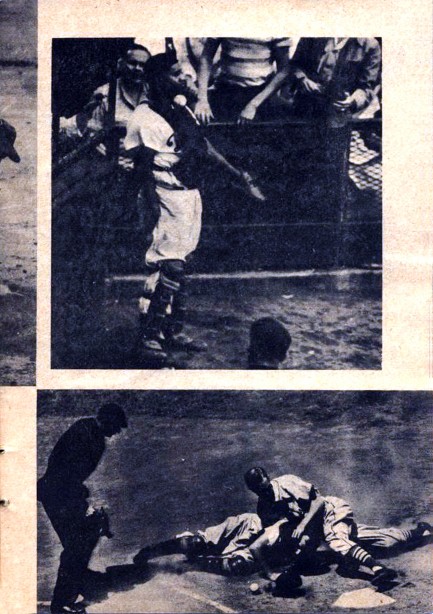
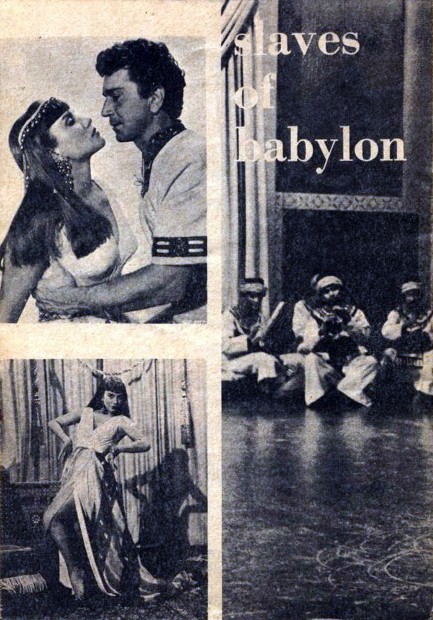
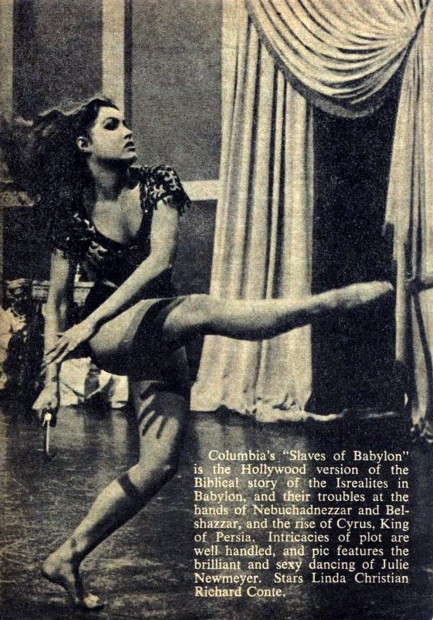
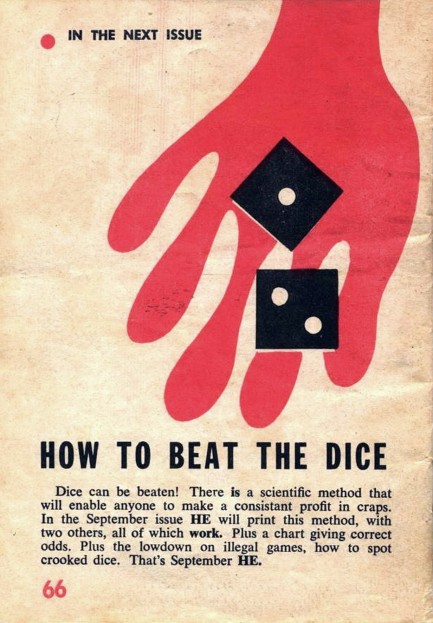
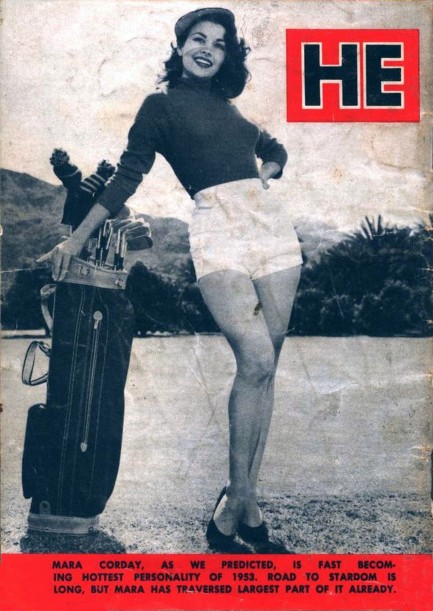
| Intl. Notebook | Feb 22 2012 |

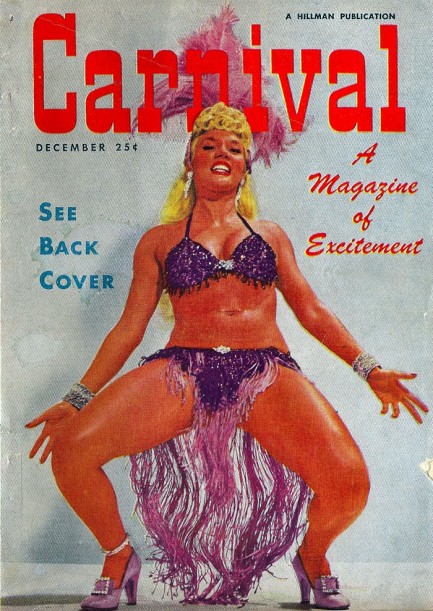
At the end of last month we posted a few images of Bettie Page that hadn’t appeared online before. They came from an issue of Carnival we were too lazy too scan in its entirety at the time. Today we have the rest of that great issue, vol. 1, no. 2, published out of Chicago, U.S.A. by Hillman Periodicals, who were the same people behind the magazine Show. The cover star is burlesque queen Lilly Christine, aka The Cat Girl, and she reappears in all her wild-eyed glory in a photo set we've placed at the very bottom of this post. We’ve seen at least two of those photos before in other magazines, however Carnival claims it was an exclusive set, shot especially for them, and indeed, that could be true, since theirs appeared before the others we saw.
After a peek behind the scenes of the Miss Universe pageant, readers get a profile of Ernest Hemingway’s most recent trip to Spain. Hemingway was visiting the Festival of San Fermin in the Basque Country town of Pamplona in order to see how his favorite sport of bullfighting had fared in the years since he’d last visited. Since the text in these digest-sized magazines scans large enough to be legible, you can read what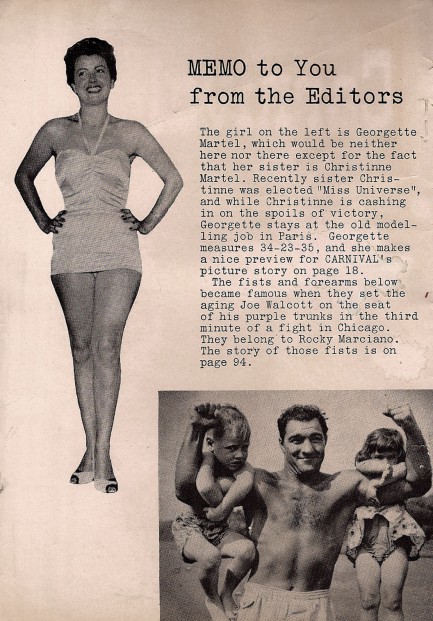
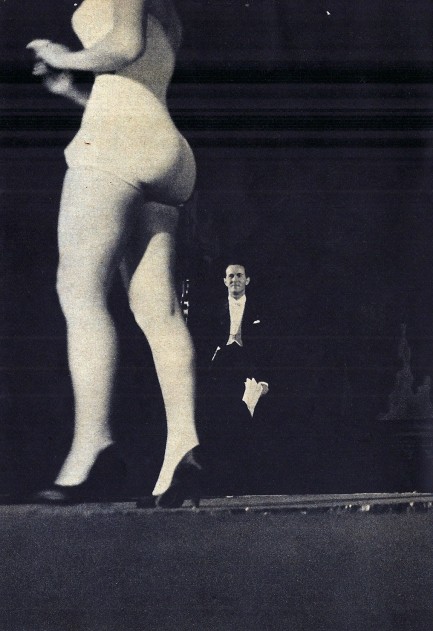
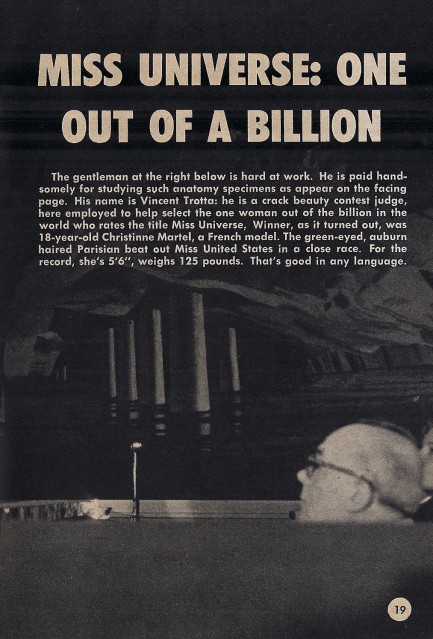
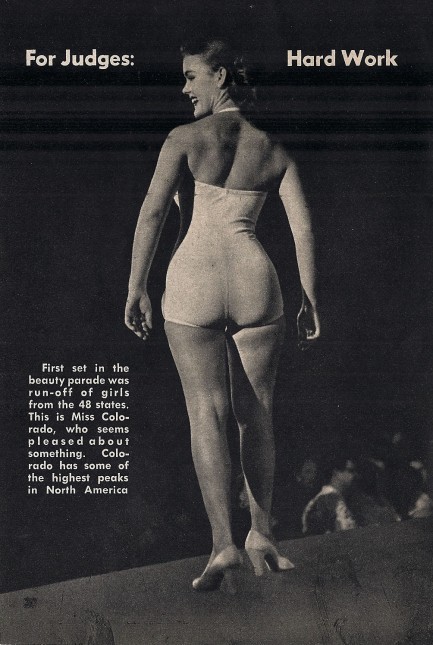
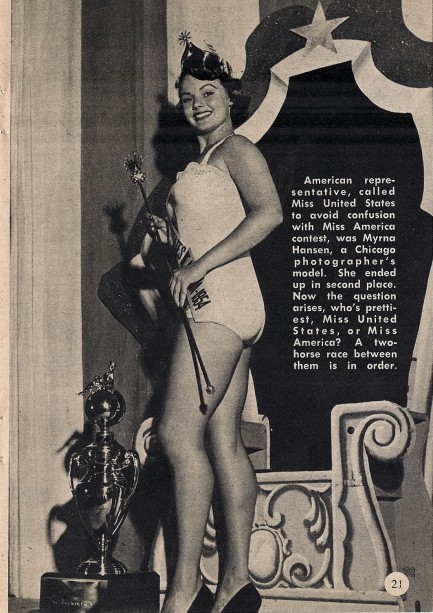
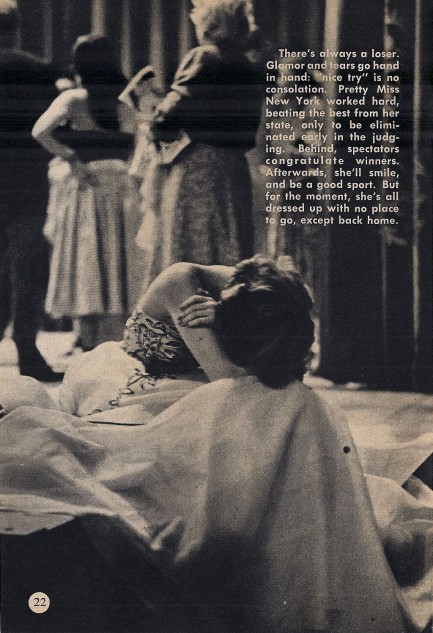
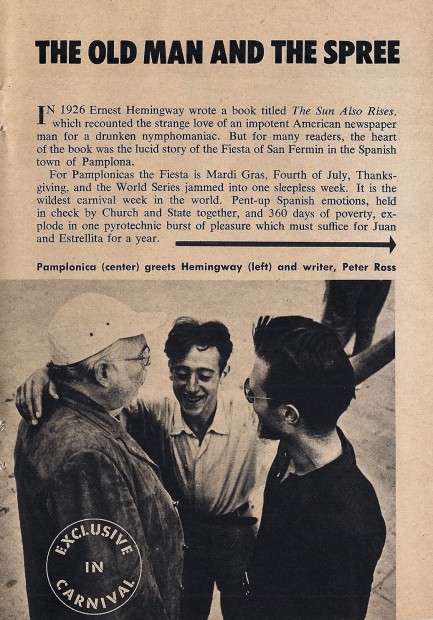
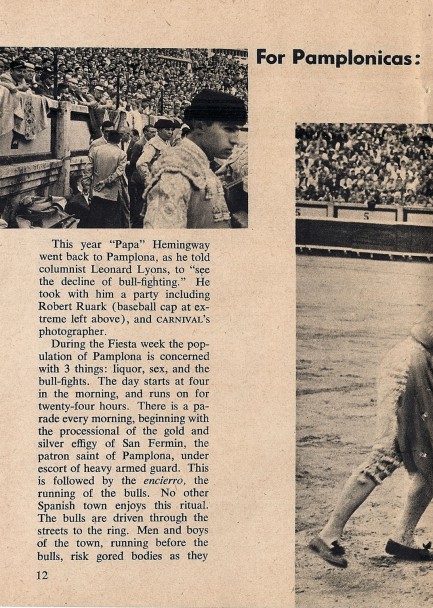
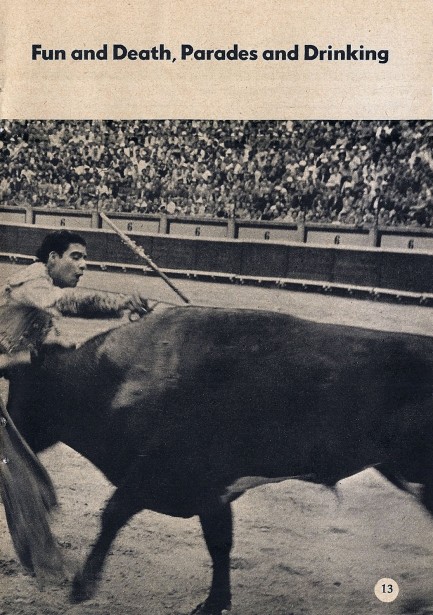
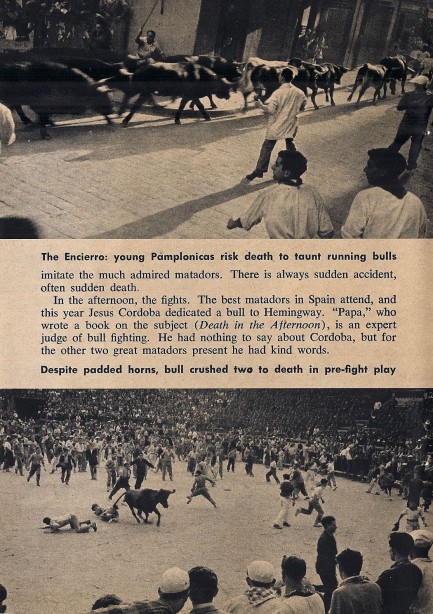
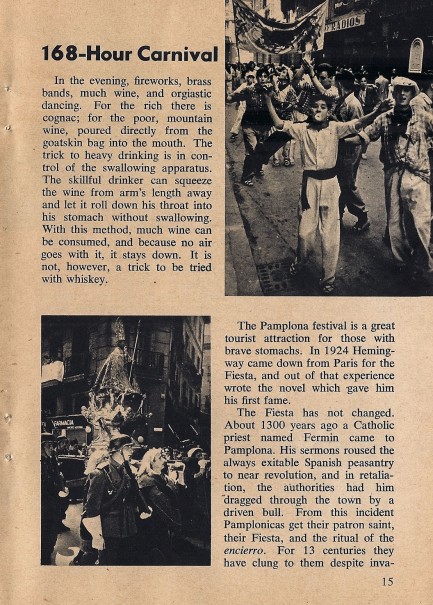
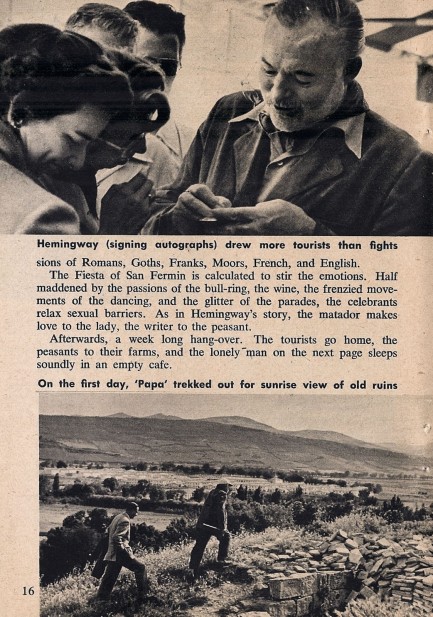
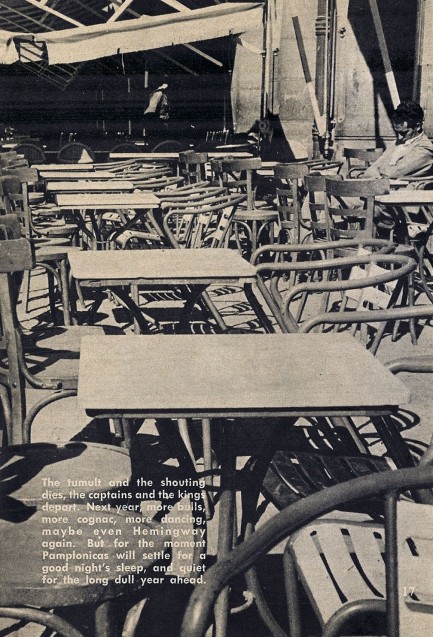 Carnival says about the famed festival yourself. We will note, however, that the writer’s description of Pamplona as dull when San Fermin isn’t happening is wrong. Spain in general, and the Basque Country in particular, are never dull. Trust us—we’ve spent a lot of time there. If you’re interested, you can read our firsthand observations of San Fermin here and here.
Carnival says about the famed festival yourself. We will note, however, that the writer’s description of Pamplona as dull when San Fermin isn’t happening is wrong. Spain in general, and the Basque Country in particular, are never dull. Trust us—we’ve spent a lot of time there. If you’re interested, you can read our firsthand observations of San Fermin here and here.
Carnival next presents readers with photos of dancer Nejla Ates, whose short set begins just below. We first saw one of these shots in an issue of Uncensored dating from June 1954, but once again Carnival seems to have gotten there first—their photos are from 1953. Ates, who for some reason often appears online unidentified, was Romanian born of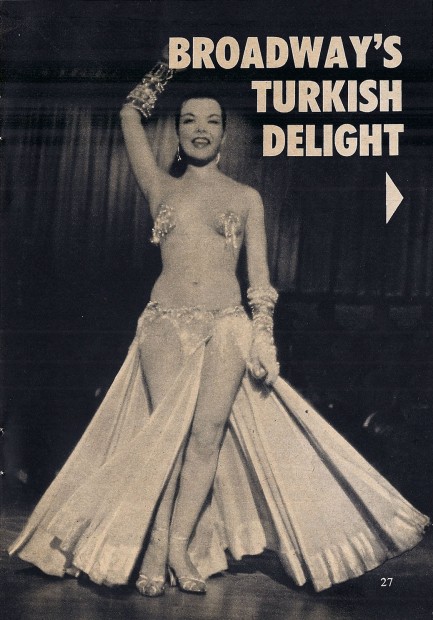
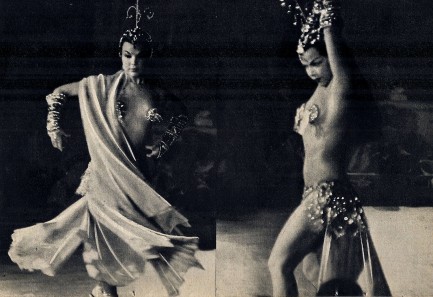
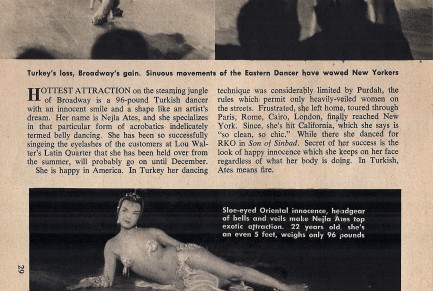 Tatar descent, and danced her way through Cairo, Rome, Paris, and London, before finally gaining international fame in New York City. She appeared in three American films during the 1950s, and was the go-to cover model for Middle-Eastern and bellydancing themed album sleeves, but despite her successes suffered the usual slate of dead end affairs and romantic heartbreaks with such men as, among others, Billy Daniels, George Sanders, and Gary Crosby.
Tatar descent, and danced her way through Cairo, Rome, Paris, and London, before finally gaining international fame in New York City. She appeared in three American films during the 1950s, and was the go-to cover model for Middle-Eastern and bellydancing themed album sleeves, but despite her successes suffered the usual slate of dead end affairs and romantic heartbreaks with such men as, among others, Billy Daniels, George Sanders, and Gary Crosby.
Following Ates is a photo feature on American actress and party girl Barbara Payton, who burned a swath through Hollywood during the 1950s, bedding co-stars, feuding with her studio, and generally raising a ruckus before eventually drifting into prostitution and dying at 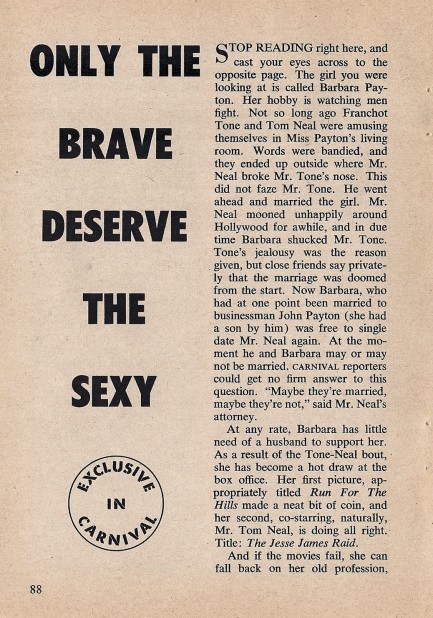
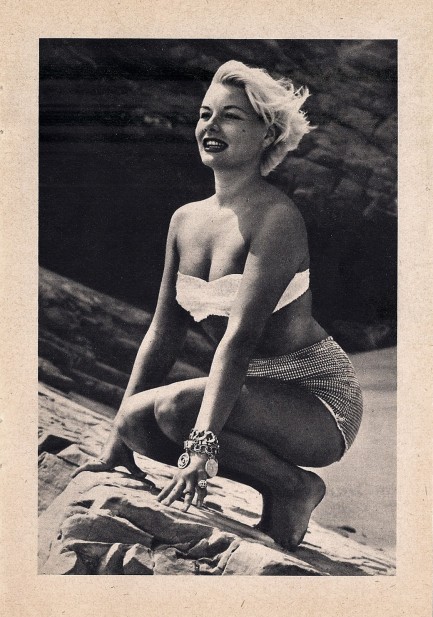
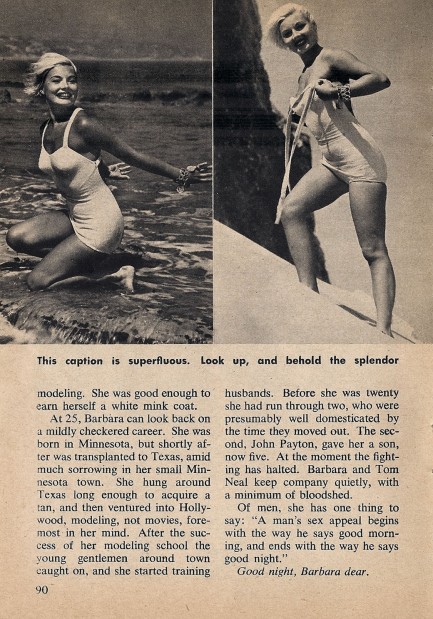
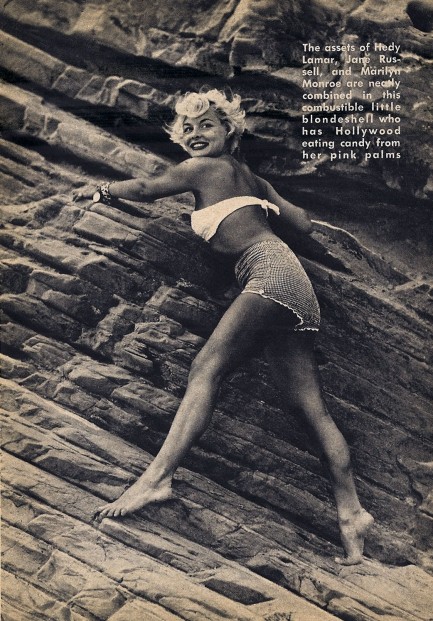 age thirty-nine of heart and liver failure. She’s described here as possessing the “assets of Hedy Lamarr, Jane Russell and Marilyn Monroe” all at once. Not sure about that, but we'll be finding out more about her later, because we will be examining her very pulpish life story in detail.
age thirty-nine of heart and liver failure. She’s described here as possessing the “assets of Hedy Lamarr, Jane Russell and Marilyn Monroe” all at once. Not sure about that, but we'll be finding out more about her later, because we will be examining her very pulpish life story in detail.
Next you get a great close-up photo of Jersey Joe Walcott having a disagreement with Rocky Marciano’s fist. Does that shot also look familiar? Perhaps because it was the cover of a January 1953 National Police Gazette. We had no idea that the fight was considered controversial at the time. Apparently, many thought Walcott took a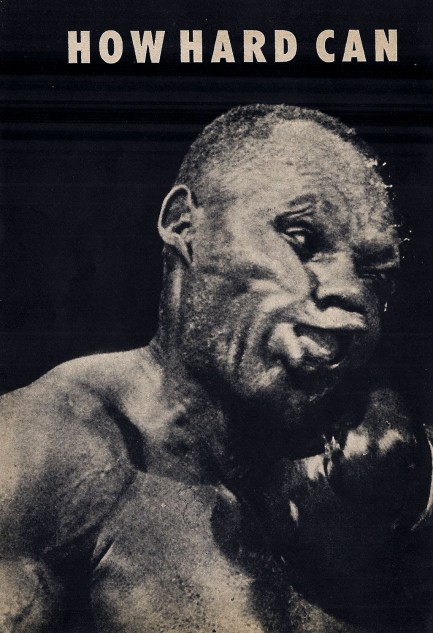
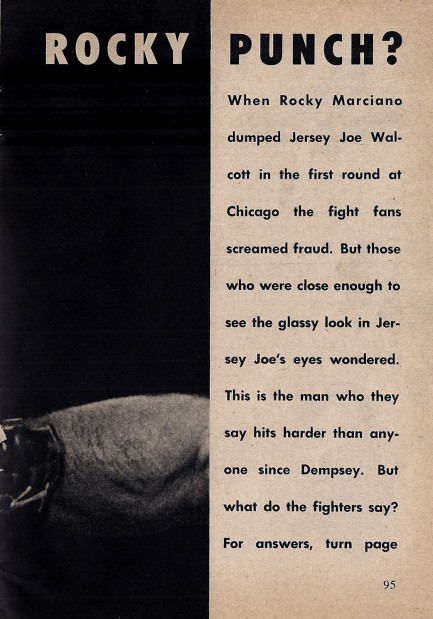 dive. Since this photo is of the actual the shot that sent Walcott to the canvas, we have to respectfully disagree. It’s lights out, and anyone can see that. In any case, you can take a gander at that Gazette cover and learn a bit about Marciano and Walcott here.
dive. Since this photo is of the actual the shot that sent Walcott to the canvas, we have to respectfully disagree. It’s lights out, and anyone can see that. In any case, you can take a gander at that Gazette cover and learn a bit about Marciano and Walcott here.
A few more treats: panel 24, just below, contains a hot shot of Marilyn Monroe at a charity baseball game; panel 26 features actress Sheree North, who doesn’t look very impressive, which means you should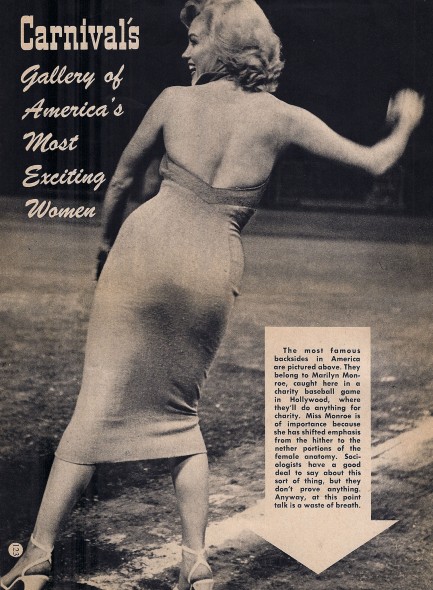
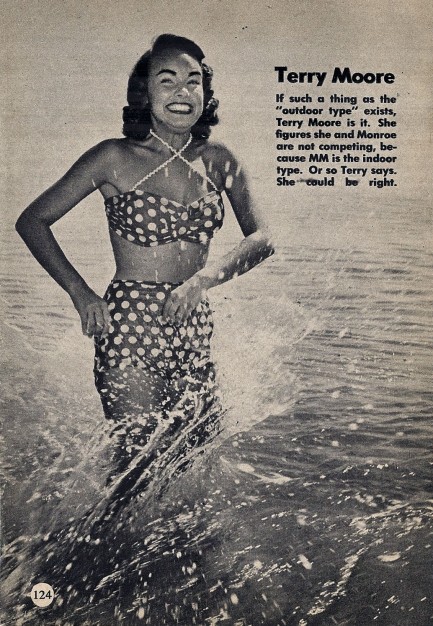
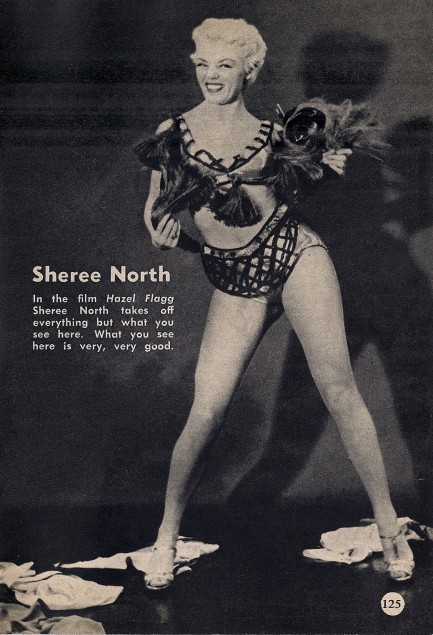
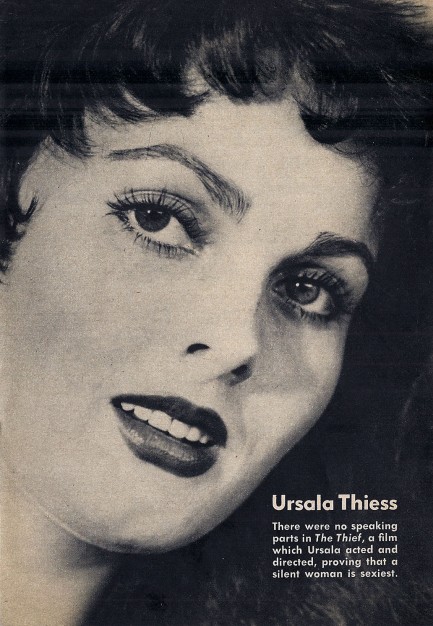
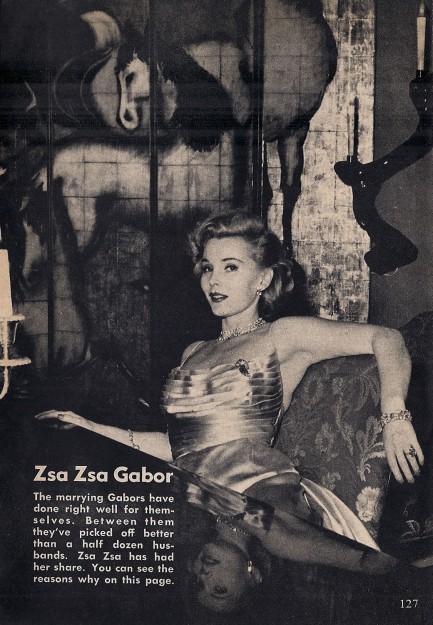
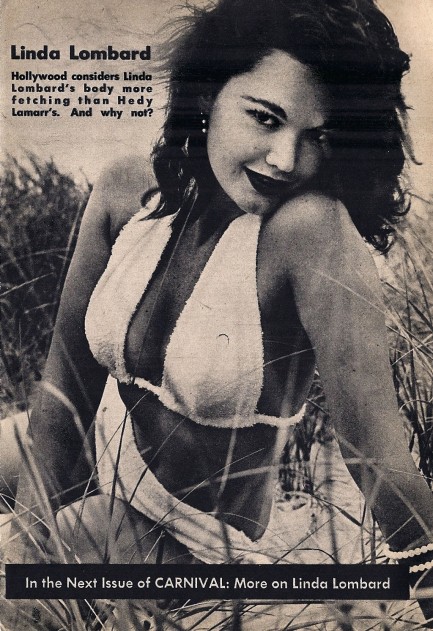 click over to our lovely femme fatale post on her here and get a sense of what a knockout she really was; and lastly, in panel 28, above, you get a killer shot of Zsa Zsa Gabor, who, believe it or not, was already nearly forty at the time and had been married three times on the way to her final tally of nine.
click over to our lovely femme fatale post on her here and get a sense of what a knockout she really was; and lastly, in panel 28, above, you get a killer shot of Zsa Zsa Gabor, who, believe it or not, was already nearly forty at the time and had been married three times on the way to her final tally of nine.
Looking at all these pages and visiting the accompanying links, you perhaps get a sense of how the mid-century tabloid industry was fueled by handout photos, with all the publications using the same shots but concocting editorial angles to create the illusion that the images were exclusive. But in Carnival’s case, it does seem to have published many of these images first. It billed itself as “a magazine of excitement”, and we have to agree. It’s also a magazine that, because of its tightly bound construction, we had to destroy in order to scan. But even though this particular issue of Carnival is now only loose leaves scattered across the room, there are other issues out there, and we’ll have some of them later, hopefully.
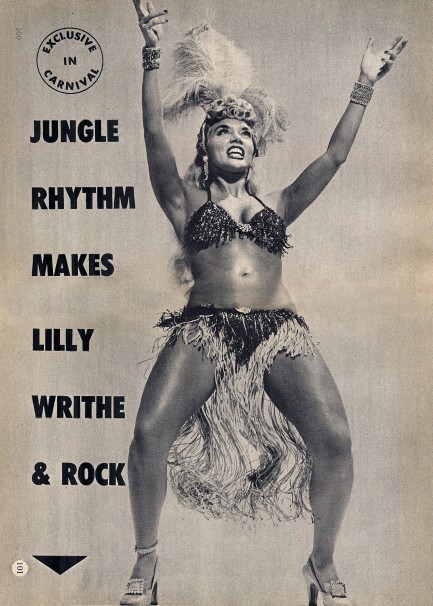
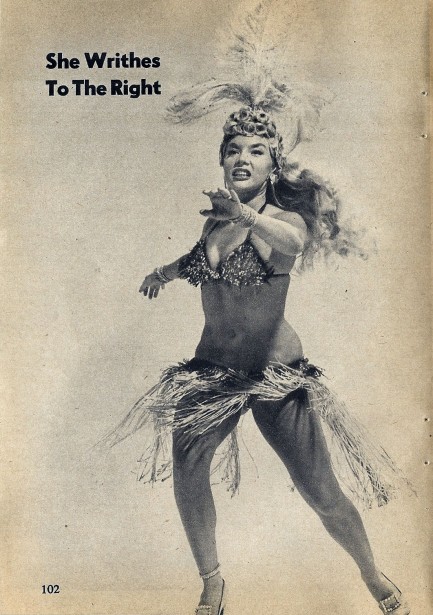
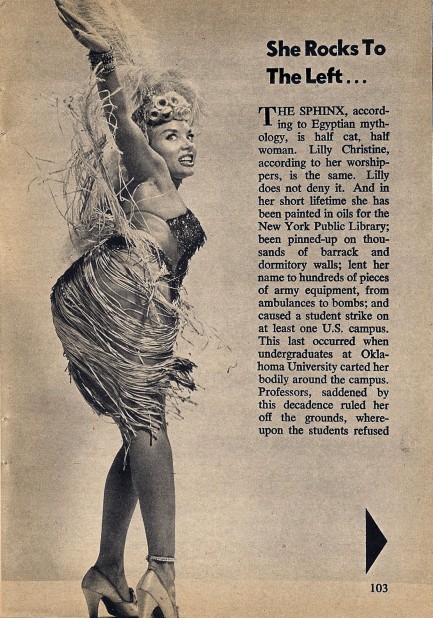
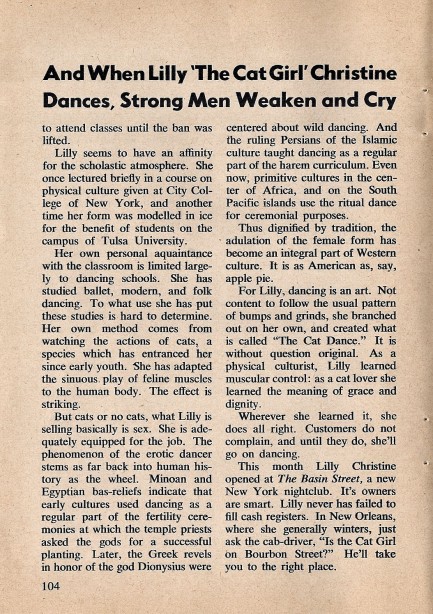
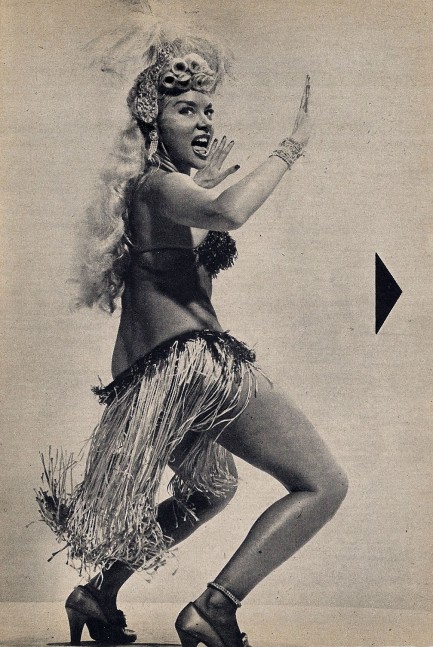
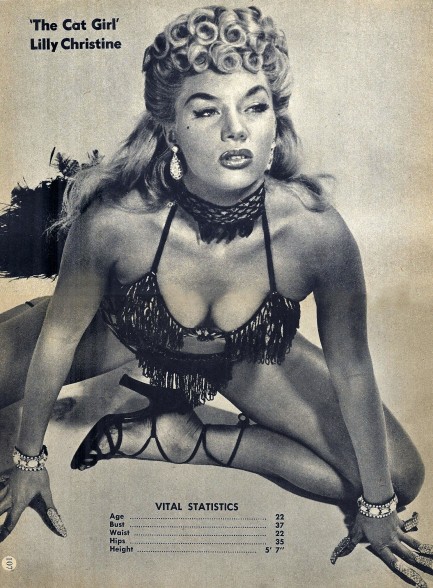
| Vintage Pulp | Mar 5 2011 |

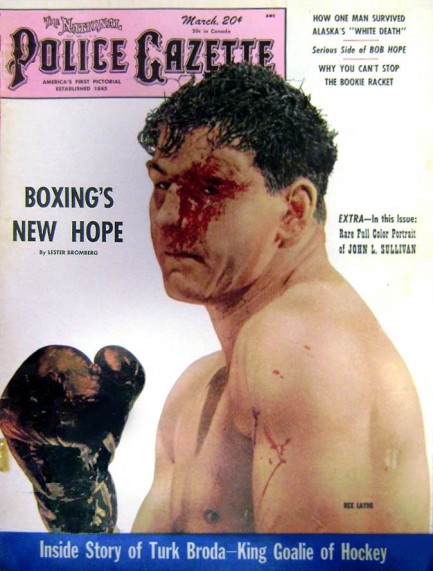
We love The National Police Gazette’s bloody, photo-illustrated boxing covers, which means we were happy when we located this March 1951 issue featuring Rex Layne, an ex-Army staff sergeant and beet farmer, who tried his luck as a professional boxer. The Gazette touts him as the ring’s next big thing, and why not? He started 17-0. Unfortunately he would lose more than half of his remaining bouts, including one with Rocky Marciano in which a lethal right by the Rock sent Layne’s mouthpiece across the canvas and broke off four of his teeth at the gumline. Needless to say, that was the end of the fight. See a photo from the bout below, along with a couple more Gazette pages.
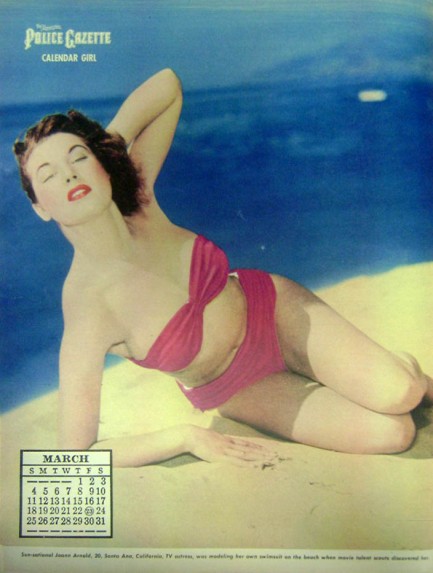
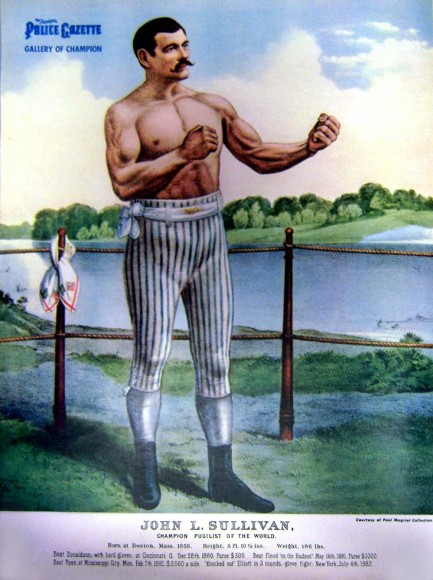
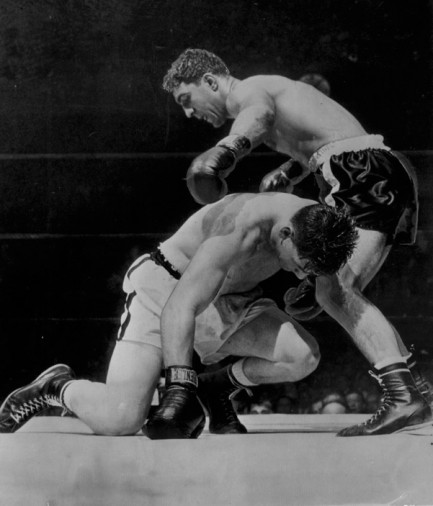
| Sportswire | Jan 3 2011 |

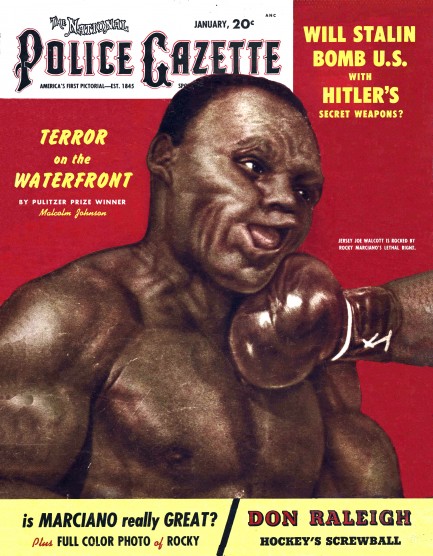
The National Police Gazette devoted more space to boxing than most magazines of its time, and Gazette editors especially loved using boxing photo-illustrations on their covers. The above, from January 1953, is yet another example—albeit an unusual one. You may think that this is actually just a bad painting, but no—it’s a colorized and retouched version of a famous photograph of heavyweight champion Jersey Joe Walcott losing to younger, hungrier Rocky Marciano. It happened September 23, 1952 in Philadelphia, and Walcott—having scored a knockdown in the first round—was ahead on points in round 13 when he walked into Marciano’s right hook. Walcott was a guy who had fought hard all his life. He was the son of Haitian immigrants and had gone to work in a soup factory when he was only thirteen. He had won a lot of bouts, but had lost 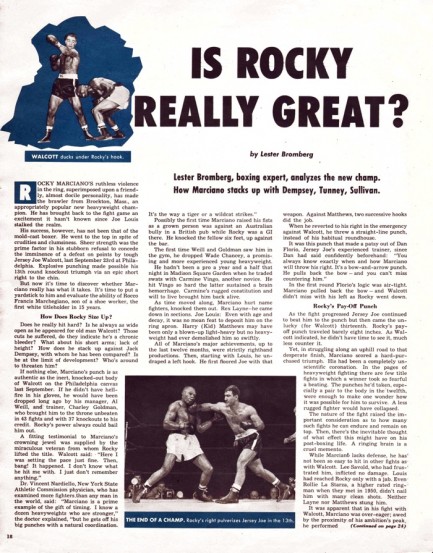
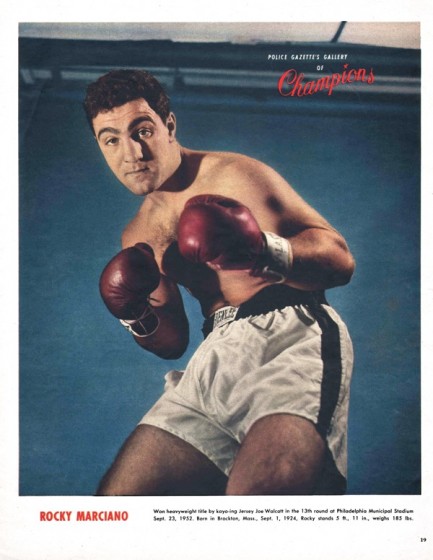 quite a few as well. He was also the oldest heavyweight champion ever at age thirty-seven. But even with all his experience, guile and drive, he had no chance of surviving the destructive power of a full-force Marciano right. Walcott hit the canvas, and the fight—as well as the best part of his career—was over.
quite a few as well. He was also the oldest heavyweight champion ever at age thirty-seven. But even with all his experience, guile and drive, he had no chance of surviving the destructive power of a full-force Marciano right. Walcott hit the canvas, and the fight—as well as the best part of his career—was over.
But Jersey Joe Walcott didn’t just fade away—that would have been completely out of character. He had friends in Hollywood and three years later appeared on the silver screen with Humphrey Bogart in The Harder They Fall. He followed that up in 1962 when he acted in the television series Cain’s Hundred. He also became a boxing referee, and was in the ring when Muhammad Ali beat Sonny Liston for the heavyweight title in 1965. Walcott was heavily criticized for his officiating during that fight, which meant the end of his career as a ref. But he proved that some men are impossible to keep down when he became sheriff of Camden County,
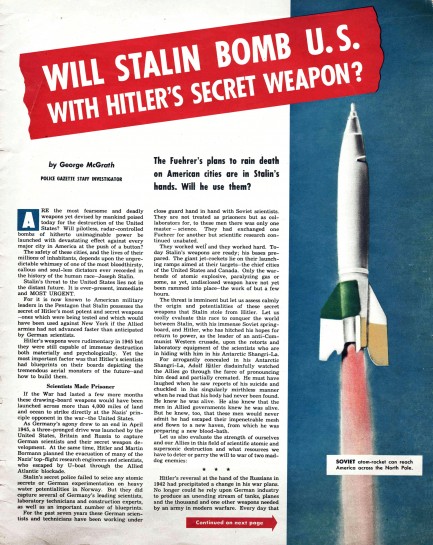
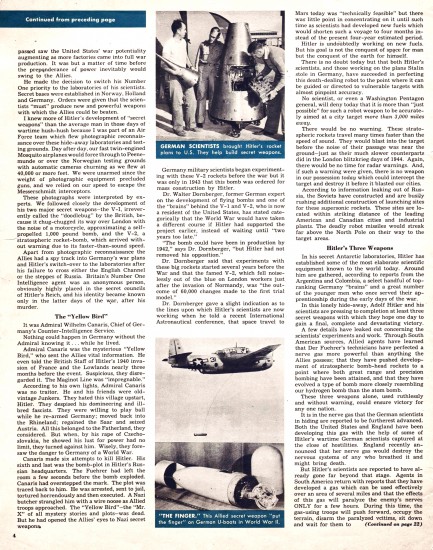
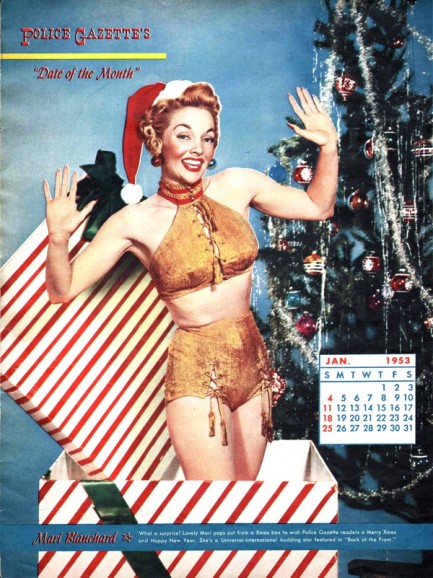
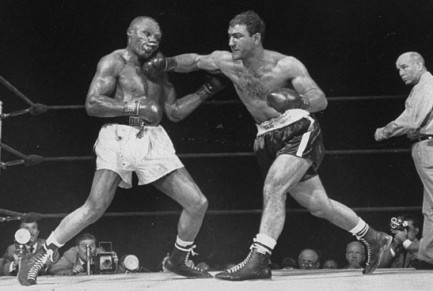
New Jersey, and later head of the New Jersey State Athletic Commission, a position he held until the age of 70. In 1994 Jersey Joe Walcott died at age 80. He had been neither the greatest nor the least of boxing champions, but he had certainly been one of the most persistent.
| Sportswire | Mar 6 2010 |

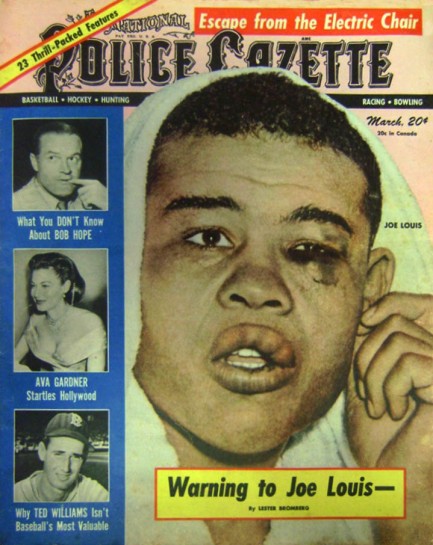
Above we have a National Police Gazette with a boxing cover, from sixty years ago this month, with the editors’ warning to the retired Joe Louis to stay out of the ring. But what the Gazette didn’t know was that the 36 year-old Louis was under investigation by the IRS, and he suspected the outcome wouldn’t be good. In May 1950 Louis was jolted when the authorities declared that he owed half a million dollars in back taxes.
With only one way to earn the cash, he cut a deal to box for prize money to put toward his debt. He fought and lost to Ezzard Charles in September, and the next year was knocked clean out of the ring by Rocky Marciano. But for all his efforts he was still in debt. The purses had been low because no one wanted to pay to see Louis—who was the first African-American considered a national hero by both blacks and whites—beaten to a pulp. After the Marciano debacle, the fight offers dried up. Louis retired again, and this one stuck.
We’re going to get back to Joe Louis at a later date, because his is one of the more interesting and inspiring stories you’ll run across. His financial troubles were not so much a failure of character as a failure to comprehend the corrupting force of money, and the need to hire not just a lawyer, a manager, and an accountant, but a lawyer to watch your lawyer, a manager to watch your manager, and especially an accountant to watch your accountant. We have some Gazette interior pages below, and you can see the other Gazette boxing covers here and here.
